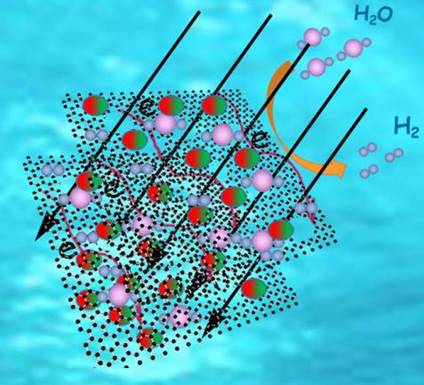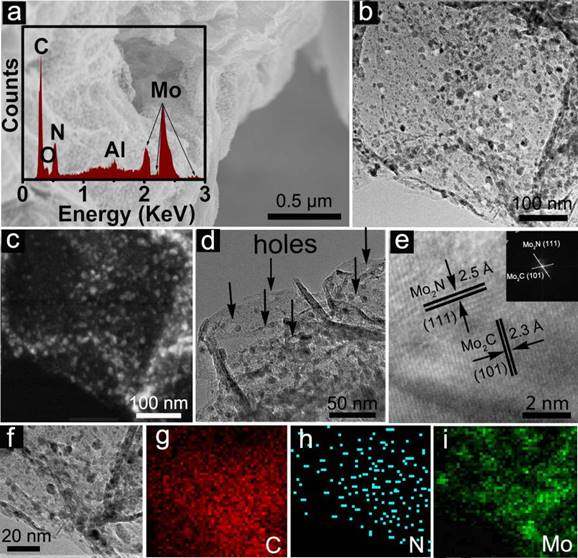Adv. Mater. 2018, 30, 1704156

Haijing Yan, Ying Xie, Yanqing Jiao, Aiping Wu, Chungui Tian,* Xiaomeng Zhang, Lei Wang, and Honggang Fu*, Holey Reduced Graphene Oxide Coupled with an Mo2N–Mo2C Heterojunction for Efficient Hydrogen Evolution (Adv. Mater. 2018, 30, 1704156)
An in situ catalytic etching strategy is developed to fabricate holey reduced graphene oxide along with simultaneous coupling with a small-sized Mo2N–Mo2C heterojunction (Mo2N–Mo2C/HGr). The method includes the first immobilization of H3PMo12O40 (PMo12) clusters on graphite oxide (GO), followed by calcination in air and NH3 to form Mo2N–Mo2C/HGr. PMo12 not only acts as the Mo heterojunction source, but also provides the Mo species that can in situ catalyze the decomposition of adjacent reduced GO to form HGr, while the released gas (CO) and introduced NH3 simultaneously react with the Mo species to form an Mo2N–Mo2C heterojunction on HGr. The hybrid exhibits superior activity towards the hydrogen evolution reaction with low onset potentials of 11 mV (0.5 m H2SO4) and 18 mV (1 m KOH) as well as remarkable stability. The activity in alkaline media is also superior to Pt/C at large current densities (>88 mA cm−2). The good activity of Mo2N–Mo2C/HGr is ascribed to its small size, the heterojunction of Mo2N–Mo2C, and the good charge/mass-transfer ability of HGr, as supported by a series of experiments and theoretical calculations. Mo compounds can act as catalysts to promote the local decomposition of rGO, simultaneously creating holes on graphene and combining with Mo-based catalysts, then HGr may be realized. In this case, GO precursors with a small

size and good dispersion properties must guarantee the formation of small-sized and uniform holes. Polyoxometalates are well-known molecular clusters with a size close to 1 nm.
The robust in situ etching strategy to couple a small-sized Mo2N–Mo2C heterojunction with HGr. The dual role of the Mo species derived from PMo12 as a source of the Mo2N–Mo2C heterojunction and an etching agent for rGO was the key to successfully fabricating the Mo2N–Mo2C/HGr catalyst. The resulting Mo2N–Mo2C/HGr exhibited promising catalytic activity, high stability for HER over a broad pH range and the favorable mass/charge-transfer ability of HGr, which is due to the small size and the synergistic action of Mo2N and Mo2C. This work is promising because it not only represents an easy and economic synthesis process for HGr but also provides a new way to construct functional HGr-based materials for applications in advanced fields.
